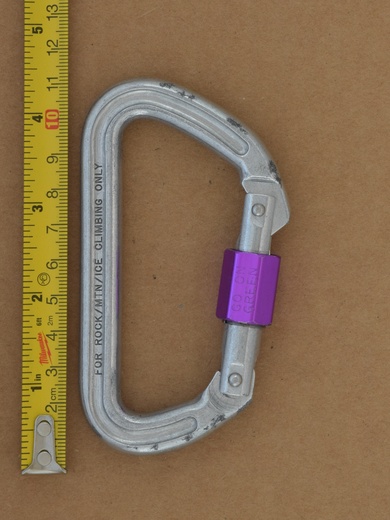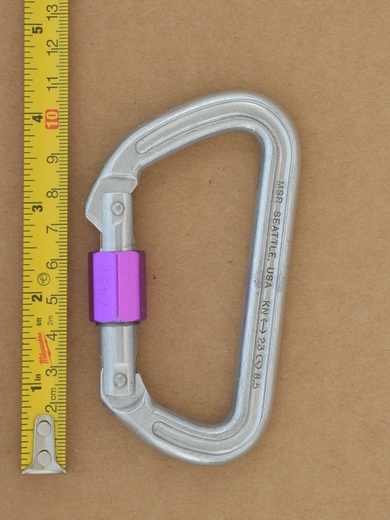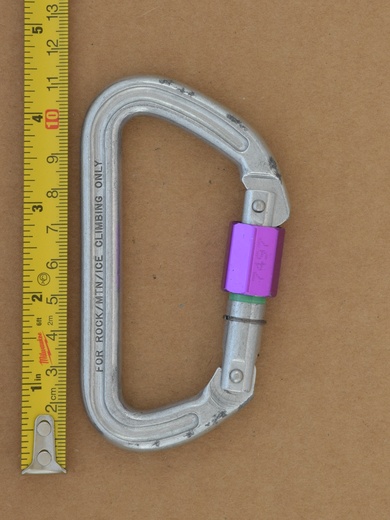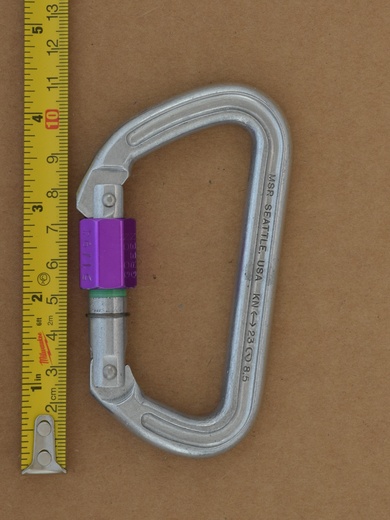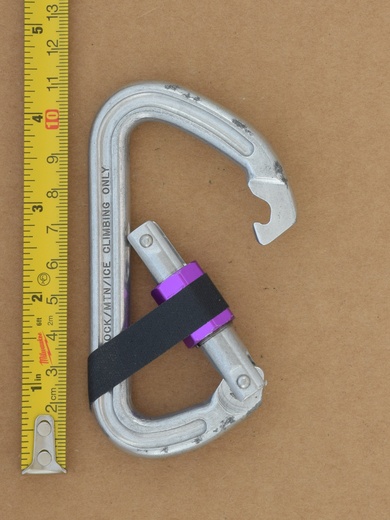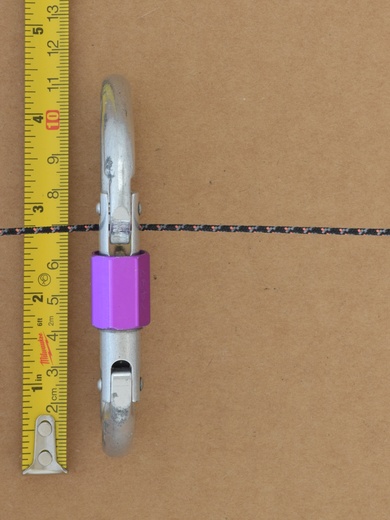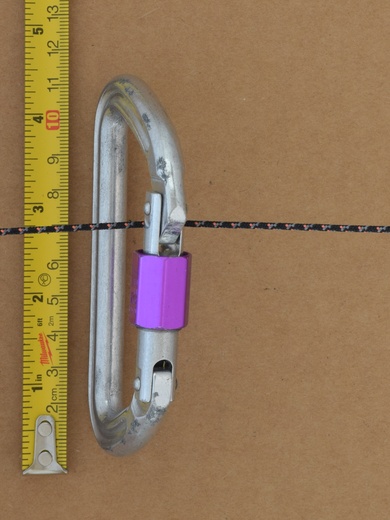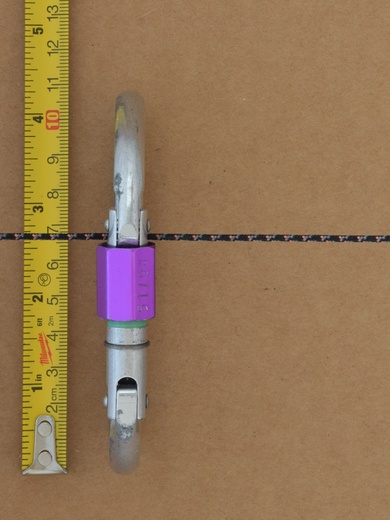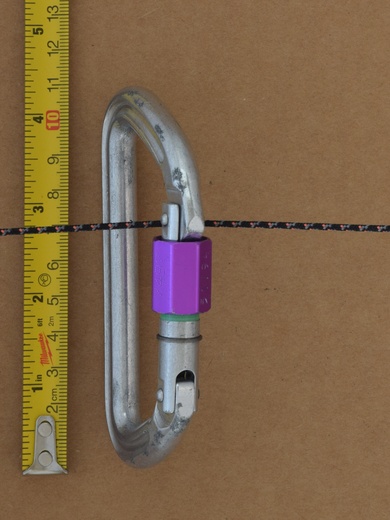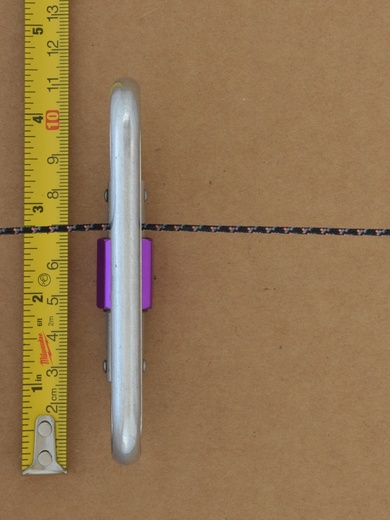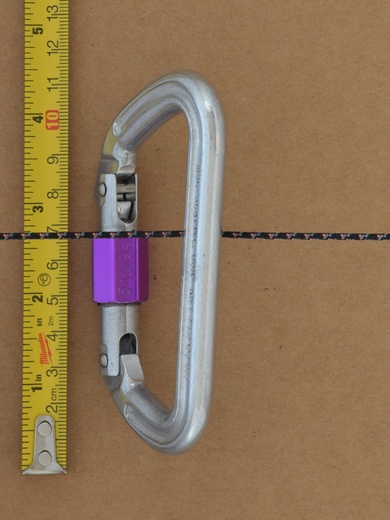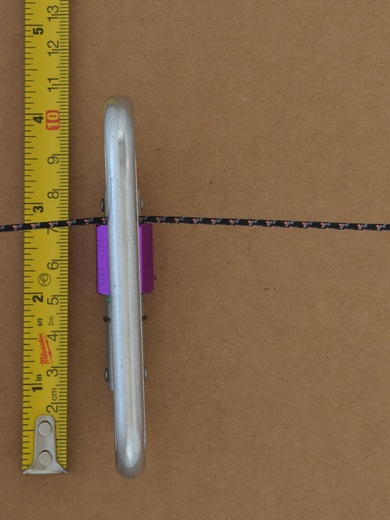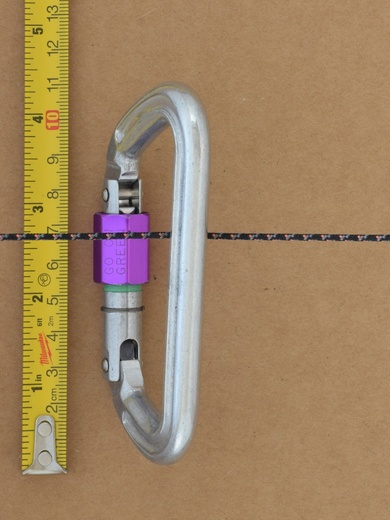| Name: | MSR Locking D I-biner |
| Sub Item: | (purple sleeve) |
| Category: | screw lock |
| Locking Type: | manual |
| Locks: | screw |
| Unlock Style: | gate stopped - unknown |
| Sleeve Rotation: | 960° (unlocked) | 1320° (maximum) |
| Shape: | asymmetric D |
| Material: | aluminum |
| Profile: | I-Beam |
| Nose: | notch & pin |
| Nose Guard: | none |
| Rivets: | domed |
| Gate Shield: | none |
| Weight: | 58.7 g |
| Dimensions: | Length: 107.08 mm Width: 60.36 mm Depth (basket end): 8.40 mm Gate Opening: 18.36 mm |
| Strength Ratings: |  23 kN | 23 kN |  8.5 kN 8.5 kN |
| Other Markings: | Stamped: MSR SEATTLE, USA (ratings) | FOR ROCK/MTN/ICE CLIMBING ONLY | GO ON GREEN 51/94 Dot Peened: 7497 |
| Batch Marking Location: | locking-sleeve |
| Summary: | MSR brand (known now for camping stoves) |
| Description & Commentary: | Larry Penberthy started Mountain Safety Research (MSR) as a newletter and organization focused mountaineering safety, including equipment testing. These early MSR tests and newsletters were instrumental in improving quality and safety in US climbing equipment, and MSR began producing their own equipment, such as stoves & ice axes. In 1981, REI bought the company, which produced whitelabel carabiners for REI, as well as carabiners under their own name. Cascade Designs (Platypus, Thermarest, etc) bought MSR from REI in 2001. MSR first advertised I-beam carabiners in 1993, touting the investment in time and money to develop the new line. The I beam is only about 4 grams lighter than a non-I-beam version. Other features of this line include:
These innovations came at a time when the industry was on the cusp of adopting keylock (and other snagless nose) designs, hot-forging, and the wiregate. 3σ Testing (or similar) and larger gate shielding have become industry norms, as well as individualized serial numbers and locking indicators for some brands or user disciplines. The MSR I-beam line represents the pinnacle of cold-formed aluminum notch-and-pin carabiners, but at the same time a design quickly overshadowed by the next generation of carabiners. The "GO ON GREEN" locking indicator clearly hasn't persisted with modern day carabiners, as with heptagonal (interesting choice!) shaped locking sleeves. As the carabiner is unlocked, the green becomes obsured 9/7ths turns before the gate actually unlocks (under no load). The gate remains locked but the angled relief on the underside of the nose permits enough gate movement that the pin would miss the notch if loaded while the gate was out of position. |
